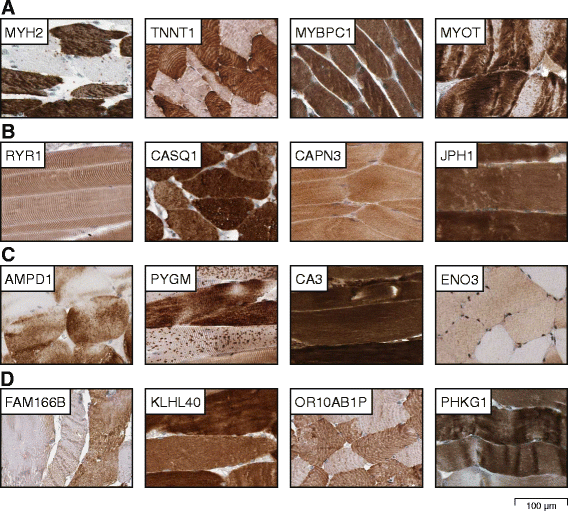The human cardiac and skeletal muscle proteomes defined by transcriptomics and antibody-based profiling
- PMID: 26109061
- PMCID: PMC4479346
- DOI: 10.1186/s12864-015-1686-y
The human cardiac and skeletal muscle proteomes defined by transcriptomics and antibody-based profiling
Abstract
Background: To understand cardiac and skeletal muscle function, it is important to define and explore their molecular constituents and also to identify similarities and differences in the gene expression in these two different striated muscle tissues. Here, we have investigated the genes and proteins with elevated expression in cardiac and skeletal muscle in relation to all other major human tissues and organs using a global transcriptomics analysis complemented with antibody-based profiling to localize the corresponding proteins on a single cell level.
Results: Our study identified a comprehensive list of genes expressed in cardiac and skeletal muscle. The genes with elevated expression were further stratified according to their global expression pattern across the human body as well as their precise localization in the muscle tissues. The functions of the proteins encoded by the elevated genes are well in line with the physiological functions of cardiac and skeletal muscle, such as contraction, ion transport, regulation of membrane potential and actomyosin structure organization. A large fraction of the transcripts in both cardiac and skeletal muscle correspond to mitochondrial proteins involved in energy metabolism, which demonstrates the extreme specialization of these muscle tissues to provide energy for contraction.
Conclusions: Our results provide a comprehensive list of genes and proteins elevated in striated muscles. A number of proteins not previously characterized in cardiac and skeletal muscle were identified and localized to specific cellular subcompartments. These proteins represent an interesting starting point for further functional analysis of their role in muscle biology and disease.
Figures






References
-
- Fagerberg L, Hallstrom BM, Oksvold P, Kampf C, Djureinovic D, Odeberg J, Habuka M, Tahmasebpoor S, Danielsson A, Edlund K, et al. Analysis of the human tissue-specific expression by genome-wide integration of transcriptomics and antibody-based proteomics. Mol Cell Proteomics. 2014;13:397–406. doi: 10.1074/mcp.M113.035600. - DOI - PMC - PubMed
Publication types
MeSH terms
Substances
Associated data
- Actions
- Actions
Grants and funding
LinkOut - more resources
Full Text Sources
Other Literature Sources

